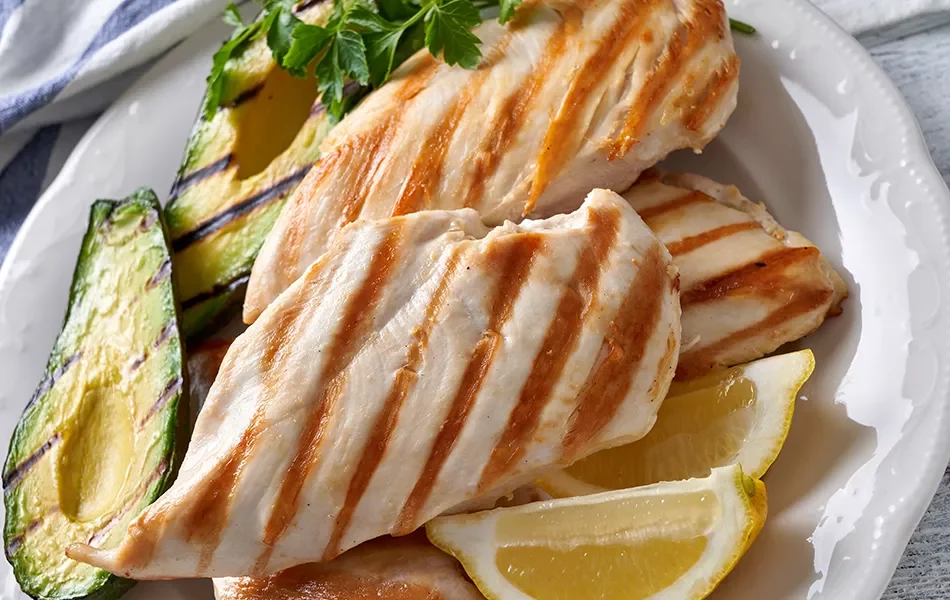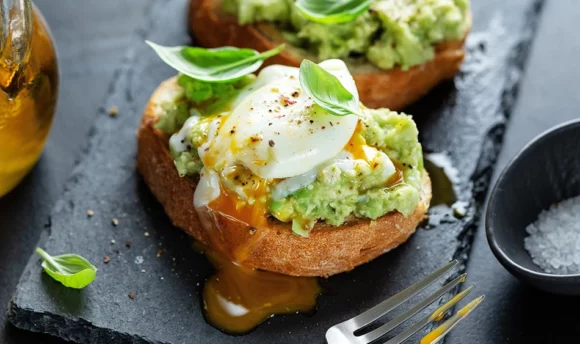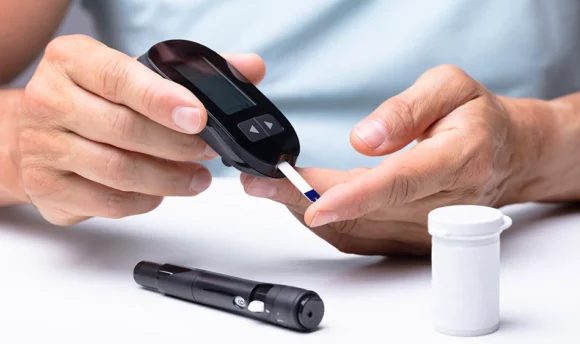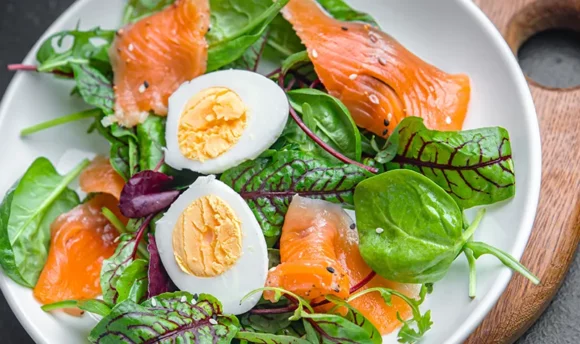How to Increase Fat Intake on Keto? 10 Easy Tips to Hit Your Targets
Are you feeling hungry, tired, and unable to focus? If so, it might be time to ramp up the fat you consume on the ketogenic diet.

The ketogenic diet allows you to fill your diet with fat. On a typical diet, fat should account for 20–35% of your daily calories, but on keto, you consume more than 80%. It’s a major change, and it’s one of the reasons why so many people adore keto.
Unfortunately, getting enough fat is sometimes easier said than done. You might struggle to meet the recommendations even after mastering your carb intake. The scenario is problematic, as you need lots of fat to stay in ketosis, lose weight, and meet your health goals.
If you’re out of ideas on how to get more fat on keto, keep reading for 10 quick tips.
How to Increase Fat Intake on Keto?
You can increase the amount of fat you consume on keto by eating fat at every meal. Your breakfast, lunch, dinner, and snacks should comprise good amounts of fat to ensure you meet your target by the end of the day. You can also drink fat-containing beverages for an extra dose.
A standard ketogenic diet includes 70–80% fat from total daily calories. On a 2,000-calorie diet, that’s about 165 grams of fat.
The important thing to remember with the keto diet is that not all fats are equal. Too much saturated and trans fat can raise your LDL or bad cholesterol levels and heighten your heart disease and stroke risk.
While you have free reign to snack on fat as much as possible, you should avoid foods containing these types of fats. Processed foods are prime culprits, such as cakes, cookies, biscuits, pastries, deep-fried foods, and processed meats like bacon, sausages, and hot dogs.
You can maintain a healthy diet with keto by eating whole foods with plenty of monounsaturated and polyunsaturated fat. Essential fatty acids like omega-3s support nutrient absorption, lower triglycerides, lower blood pressure, and raise HDL (good) cholesterol.
What happens if you don’t get enough fat on keto?
Not getting enough fat can ultimately ruin your keto journey and hinder progress. You’ll feel hungry, tired, and low on energy as your body tries to function, making the diet less sustainable and you more likely to quit.
If you don’t give up, the intense hunger and cravings will likely drive you to eat carbs and leave the metabolic state of ketosis.
When your body no longer has access to glucose from carbohydrates, it needs an alternative energy source – and that’s fat. So, getting enough is a must if you want to reap the health benefits of the keto diet, from burning body fat to regulating blood sugar levels.
The only way to know if you’re getting a sufficient amount is to track your macros. You can do this with keto apps that provide the tools to record and monitor your daily intake easily.
10 Quick Ways to Get More Fat on Keto
If your fat intake is down, there are a few speedy ways to increase it and get back on target. From snacking to updating your cooking methods, you can soon ensure you get enough fat to power your fat-burning journey.
#1 Eat more avocados
Avocados are possibly the greatest food in existence for your ketogenic diet. They are a low-carb plant food packed with heart-healthy fats. One average avocado fruit has a whopping 22 grams of fat, with 14.7 grams of monounsaturated fats and 2.72 grams of polyunsaturated fats.
These are the fats that help reduce your heart disease risk, making avocado a super healthy food. It’s not all about the fat, either. Avocado has other nutrients like carotenoids, fiber, potassium, magnesium, folate, and vitamin C to support your overall systemic health.
You can safely eat one whole avocado daily on keto without worrying about carbs. You can also get your avocado fat intake from avocado oil – one of the best plant-based oils for keto diets.
#2 Drink bulletproof coffee
Bulletproof coffee is a high-calorie, high-fat beverage that helps keto dieters get their daily fat fix. It is made with butter, oils containing medium-chain triglycerides, such as coconut or MCT, and caffeine. It’s easy to make; just add the butter and oil to your cup of black coffee.
This drink will fill you up and kickstart fat-burning processes. It gives you fast energy and makes a great switch from heavy, high-carb breakfasts. It’s one of the best morning drinks for weight loss, and studies show the combination of caffeine and MCTs can boost ketogenesis (the metabolic process that produces ketone bodies).
#3 Snack on nuts and seeds
Snacking is an essential way to get more healthy fats into your diet. High-fat foods like nuts and seeds top up the fat you get from main meals and help satisfy your cravings. They’re loaded with unsaturated fats and offer good amounts of protein, fiber, vitamins, and minerals.
Some of the best high-fat nuts for keto include almonds, Brazil nuts, macadamia nuts, pecans, and walnuts. Combine a handful with high-fat seeds, like chia seeds, flax seeds, pumpkin seeds, and sesame seeds.
#4 Cook with healthy oils
As well as choosing high-fat foods and creating healthy fat recipes, you can cook with oils. Adding avocado oil, coconut oil, or olive oil to the pan when cooking vegetables, meat, and fish is a quick way to ramp up your fat intake. You can also drizzle them over your cooked dish.
Healthy oils are those that are rich in monounsaturated and polyunsaturated fats. Avoid trans fats by eliminating refined vegetable oils and hydrogenated and partially hydrogenated oils from your keto diet. Some examples include margarine, corn oil, and sunflower oil.
#5 Opt for full-fat versions of foods
Skip the low-fat options and always select full-fat versions of your favorite food and drinks when following the keto diet. For example, choose fatty cuts of meat, grass-fed butter, full-fat yogurt, heavy cream, and full-fat cream cheese.
#6 Make fat bombs
Fat bombs are high-fat, low-carbohydrate snacks that deliver a quick dose of much-needed fat for your keto diet. They can help alleviate hunger, satisfy sweet cravings, and boost energy levels. Many keto dieters prepare fat bombs in advance to provide snacks for the week.
Keto fat bombs typically include healthy fats like coconut oil and nut butter, but you can find a range of fat bomb recipes with all kinds of delicious ingredients.
#7 Cook creamy foods
Cream is high in fat, so it makes sense that consuming creamy dishes will give you more fat. Look for keto-friendly recipes that include heavy whipping cream, sour cream, or coconut milk as a base. These creamy ingredients work well with sauces, soups, dips, and puddings.
#8 Eat your veggies with fat
A healthy keto diet comprises plenty of low-carb veggies. Broccoli, Brussels sprouts, cauliflower, kale, lettuce, and spinach are perfect for meeting the keto diet’s low-carb requirements. They provide essential nutrients, but they don’t contribute much healthy fat.
However, you can add healthy fats by cooking your vegetables in butter and olive oil. When snacking, pairing raw veggies with cream cheese or nut butters will increase the fat content without any preparation.
#9 Add coconut wherever possible
Coconut is a star ingredient in the keto diet. While you should usually limit saturated fat in your diet, coconuts are an exception because they are a healthful source of saturated fat. That’s because they contain medium-chain fatty acids, which the body absorbs differently.
Health benefits include better heart health, blood sugar regulation, and weight loss. You can take advantage of its high-fat content by incorporating it into your keto diet wherever possible. Be sure to eat raw coconut, coconut oil, and coconut cream to get enough fat on keto.
#10 Use multiple sources of fat in each meal
Instead of focusing on one high-fat food per meal, fill your plate with various fat sources to increase your healthy fat intake. It’s easy to create a nutritious plate that covers all bases. The choices are endless, as so many healthy fats remain low in carbohydrates.
The perfect keto breakfast could include high-fat meats, whole eggs, and avocado. For dinner, you could serve a portion of fatty fish, roasted nuts, and buttered or creamed vegetables.
Best Foods High in Fat for the Keto Diet
The dirty and clean keto diets differ in terms of food quality. Prioritizing high-quality fats is the most effective way to handle the keto diet for healthy weight loss. You can do this by focusing on unsaturated fat sources and keeping saturated and trans fats to a minimum.
Here are some of the best good fats for keto and how much fat they contain per 100g:
- Avocado: 14.7g
- Butter: 81.1g
- Coconut: 33.5g
- Olives: 15.3g
- Eggs: 9.51g
- Sardines: 11.4g
- Smoked salmon: 4.32g
- Olive oil: 100g
- Goat cheese: 29.8g
- Walnuts: 65.2g
FAQs
You can increase your fat intake on the keto diet by revamping your meal plan. Use monounsaturated fat and polyunsaturated fat wherever possible, from cooking to snacking. Adding oils, preparing fat bomb snacks, and drinking bulletproof coffees are great options.
The keto diet is a high-fat diet, meaning you must increase the amount of fat you eat on a daily basis. The typical keto diet consists of 70–80% fat from your daily caloric intake. All of your meals must contain healthy fats to meet the numbers.
When you eat more fat on keto, you might notice a decrease in keto flu symptoms. People who don’t get enough fat in their diet tend to feel hungry, weak, tired, and irritable. You can alleviate these common side effects with a higher fat intake.
A fat bomb is a snack rich in healthy fats and low in carbs. It usually comprises a high-fat base such as coconut oil, cream cheese, or nut butter, paired with something low-carb, like dark chocolate. Fat bombs are popular among people following the keto diet or other low-carb diets as they help you get enough fat to fuel fat burning and increase energy levels.
A Word From a Nutritionist
You can expect better results with the ketogenic diet when you create an effective macros ratio. That means getting lots of fats, moderate amounts of protein, and a few carbs to keep your body in a happy state of ketosis without unpleasant side effects like fatigue and hunger.
It can take time to determine how much fat you need. Age, sex, height, weight, activity level, and health goals all influence the numbers. You need to find a balance between eating too little and too much fat in your meal plan, as both scenarios are detrimental to your results.
If you’re keto diet curious, talk to your doctor or dietician before attempting the low-carb diet. It is highly restrictive, so it is not the right move for everyone.
Conclusion
Hitting your dietary fat requirements is vital for success with the keto diet. The popular low-carb diet relies on fat consumption to fuel the switch from glucose to fat. It becomes your body’s new energy source, so you need enough to function throughout your keto journey.
It might feel like you’re eating fat excessively in the early days, but you will soon feel the benefit. Most of all, you won’t feel hungry, tired, or nauseous as your caloric needs are met.

















































 Select your language:
Select your language: 








